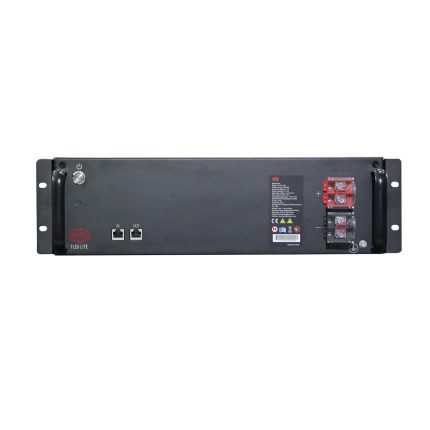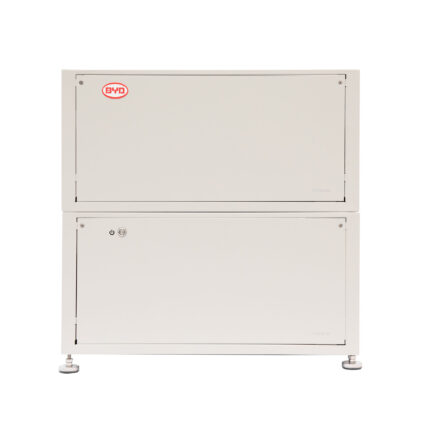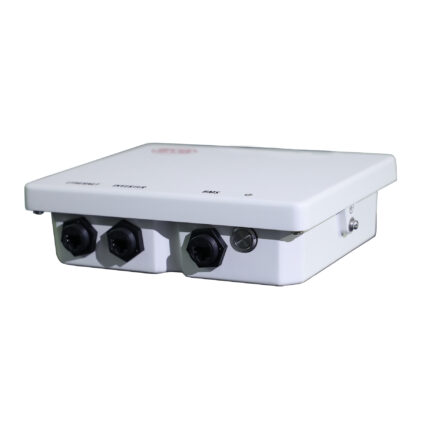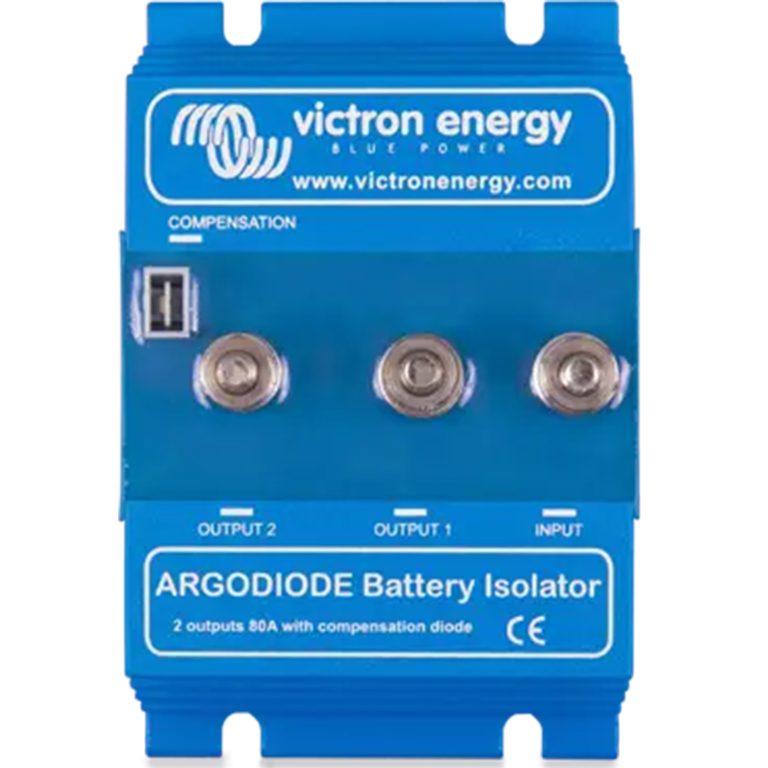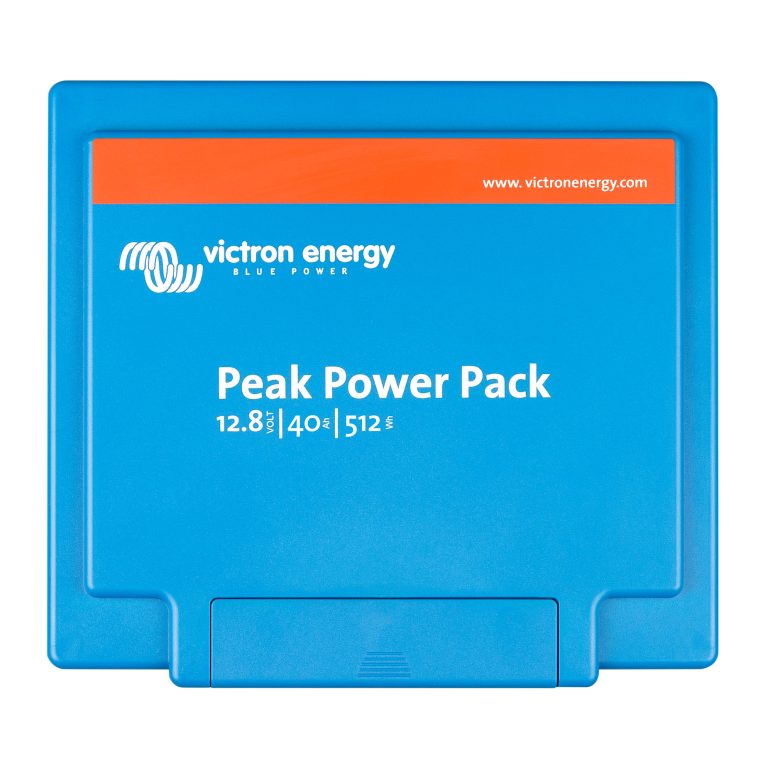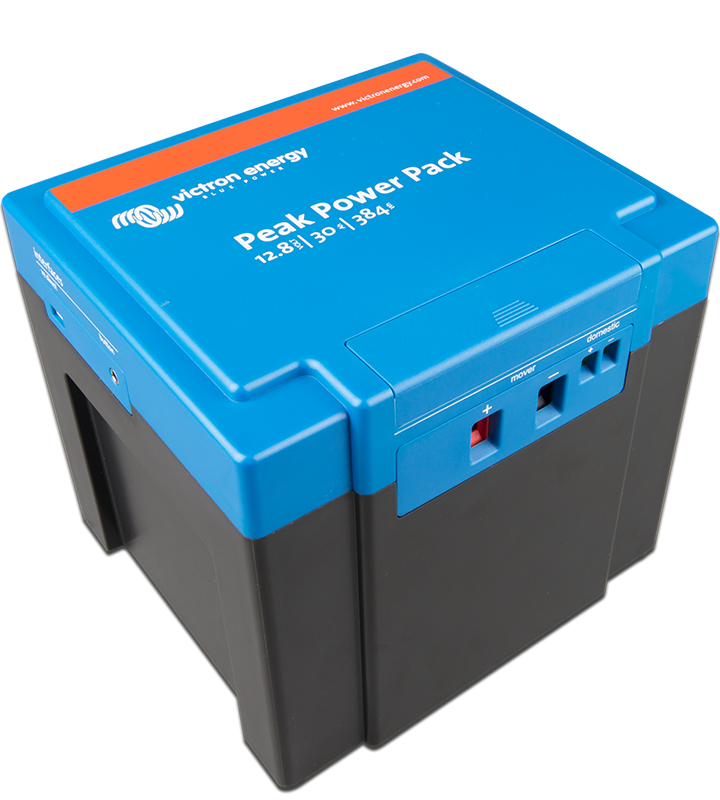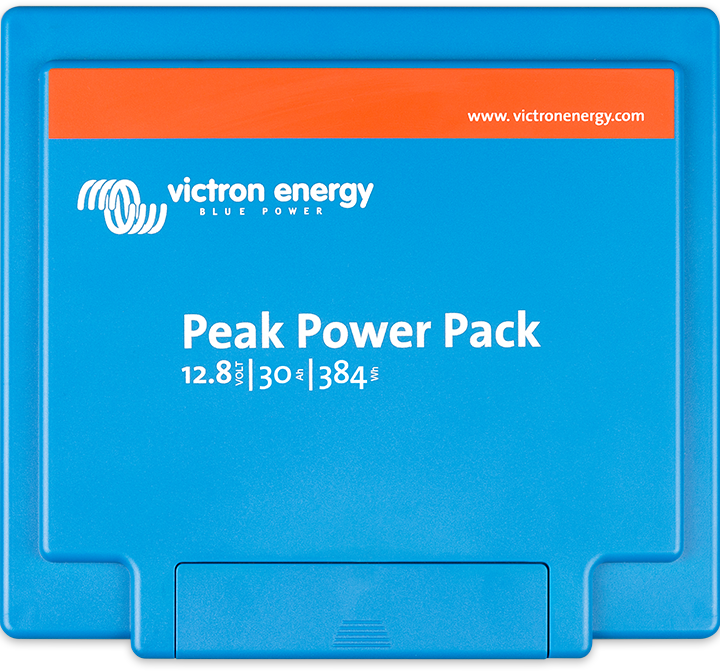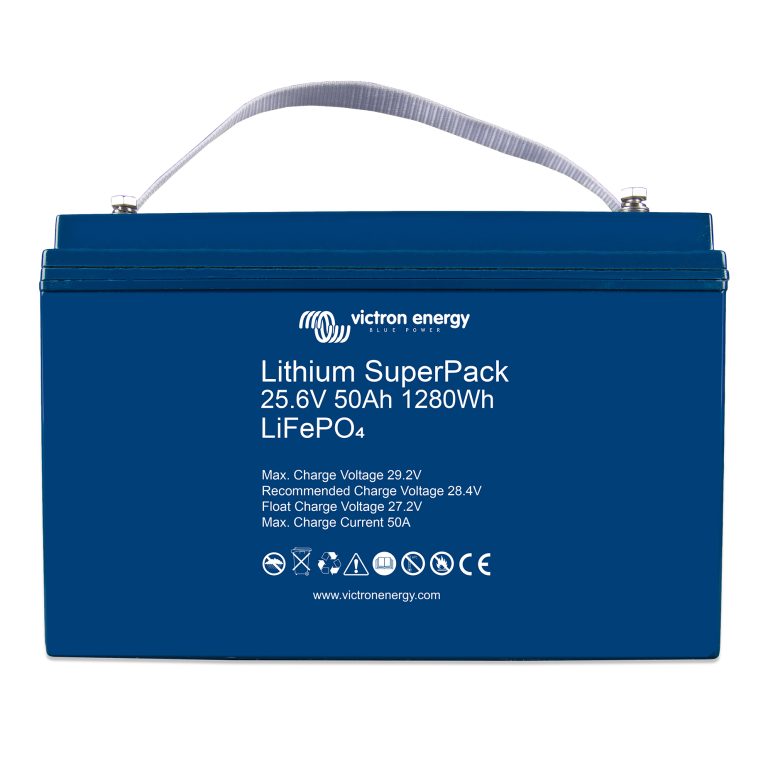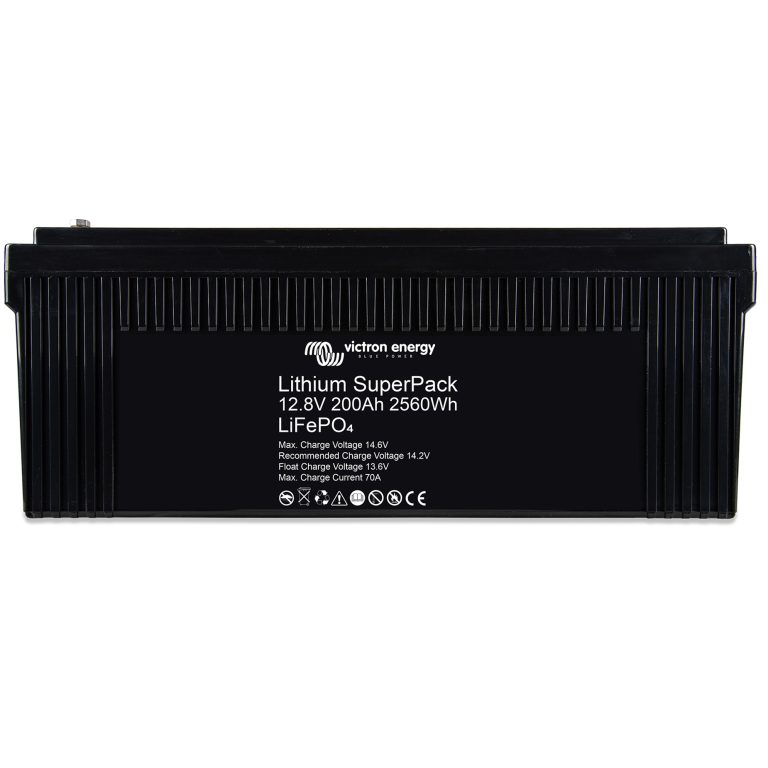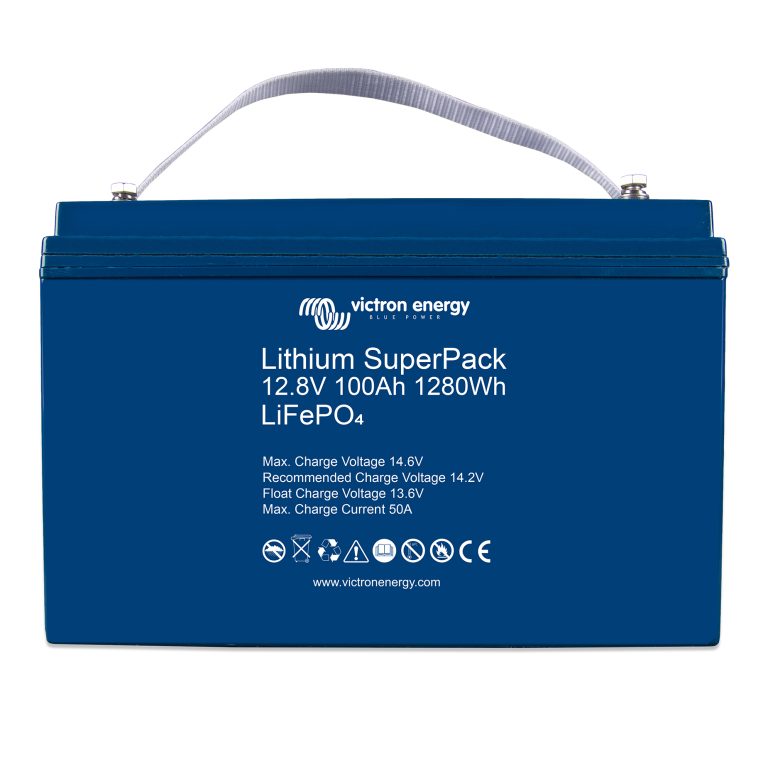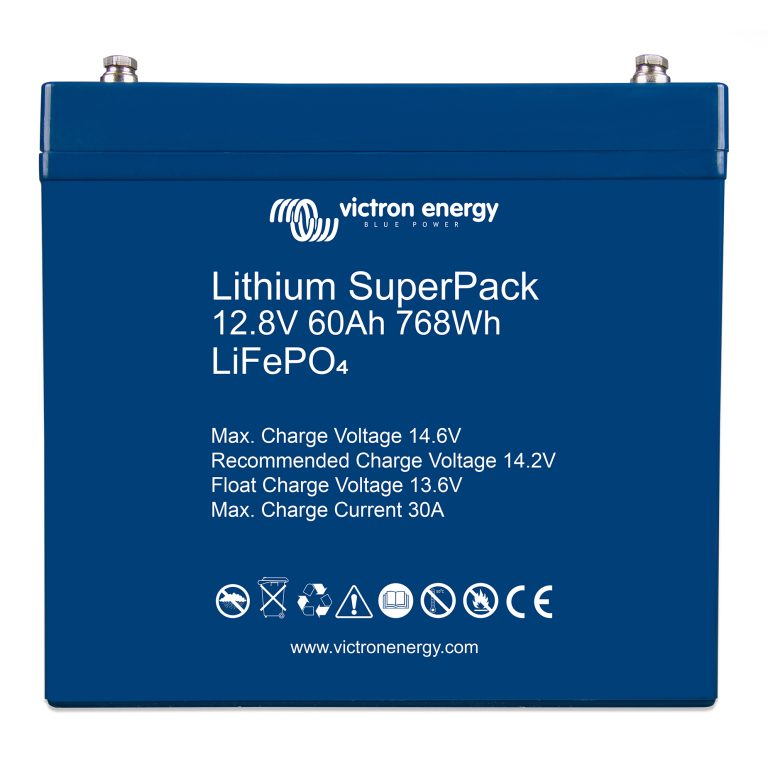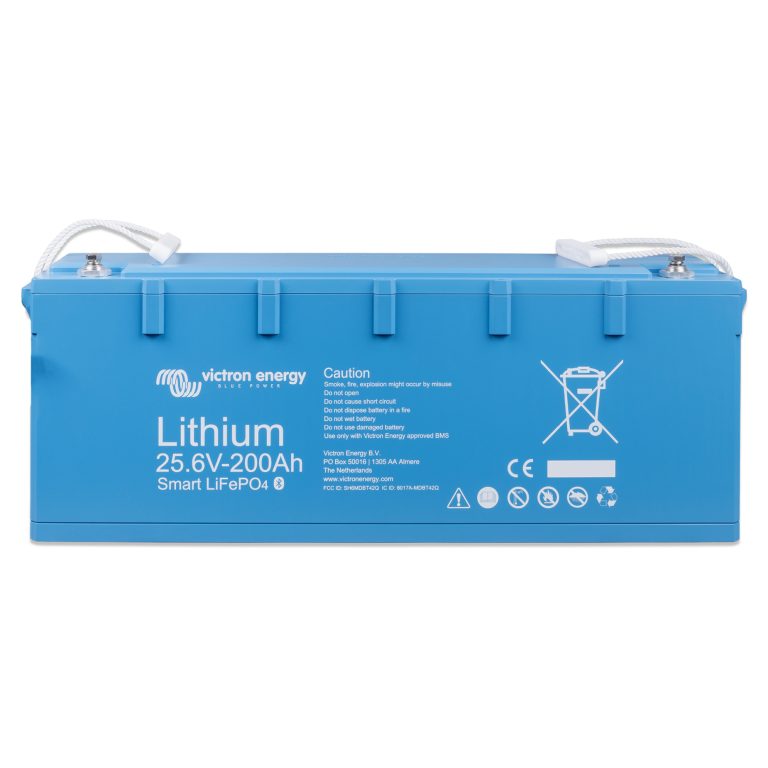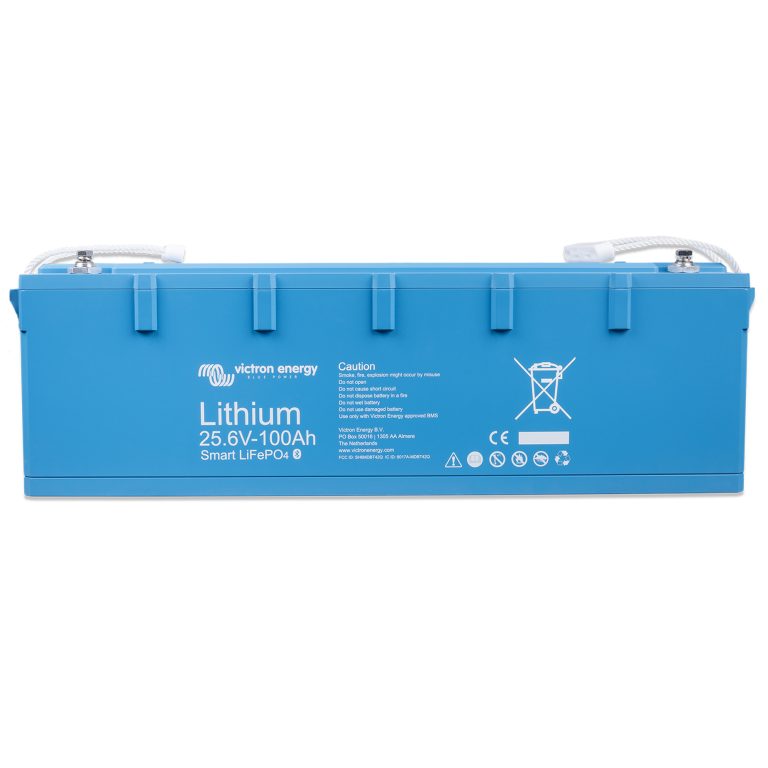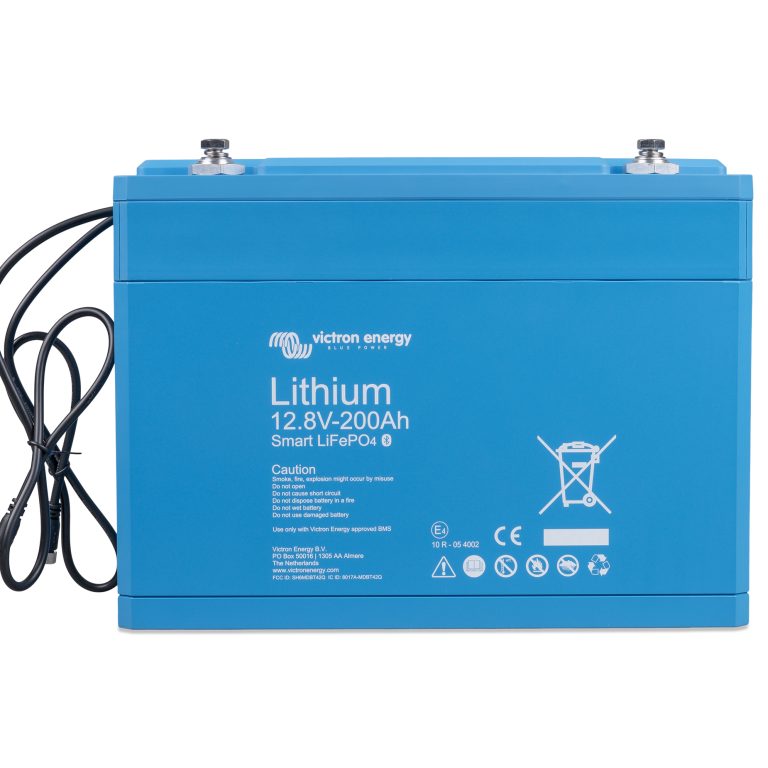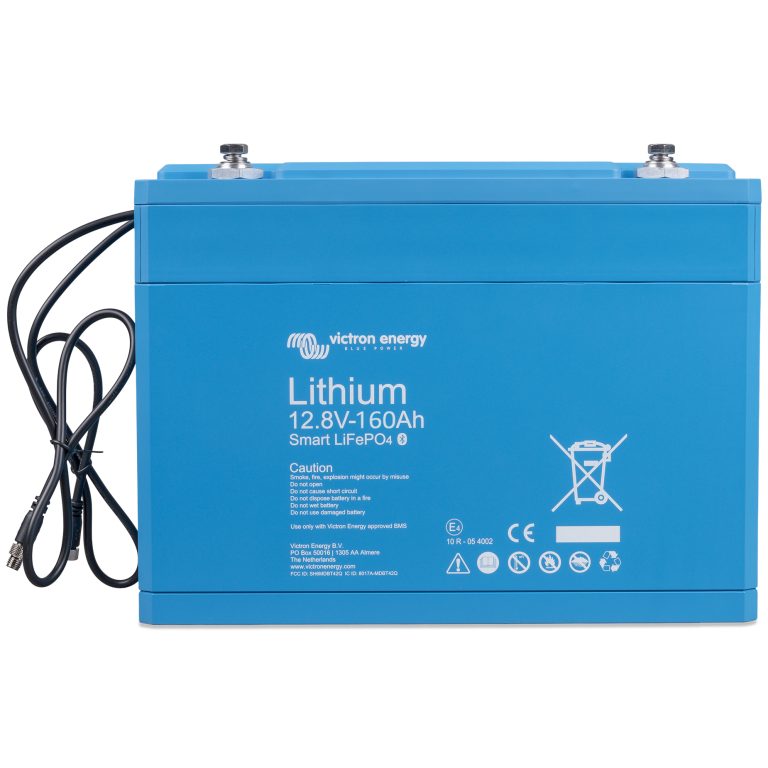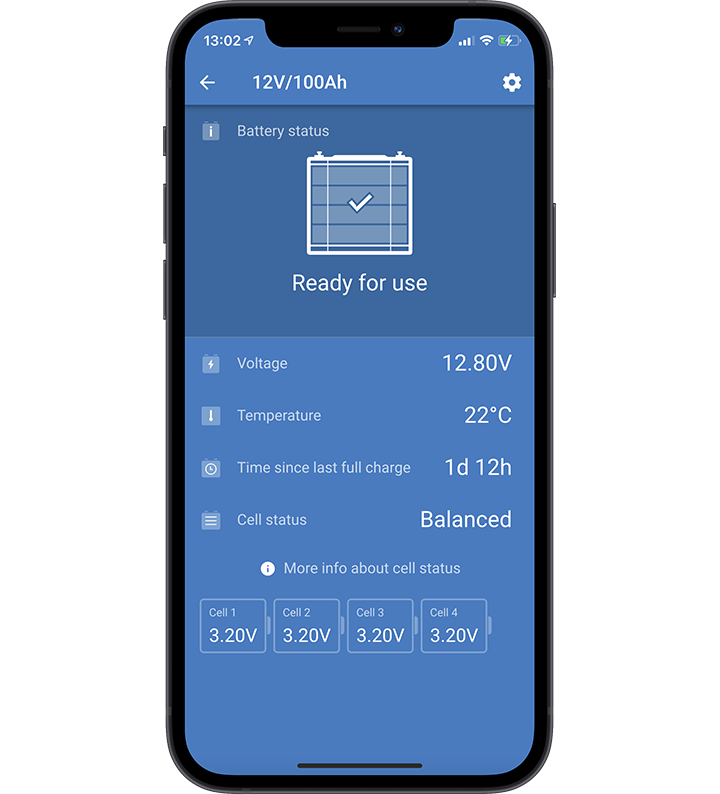PRODUCTS
Victron
- Uncategorized2 products
- BYD7 products
- Inverter0 products
- MG5 products
- Super B11 products
- Victron423 products
- Accessories59 products
- Battery monitors & batteries98 products
- AGM Battery11 products
- AGM Telecommunications Battery3 products
- Battery Isolators and Combiners19 products
- Battery Management System6 products
- Battery Monitors6 products
- Battery Protect8 products
- democategory0 products
- GEL Deep Cycle7 products
- Inverter/Charger/MPPT6 products
- Lithium Smart Battery19 products
- Lithium SuperPack Batteries5 products
- Peak Power Batteries3 products
- Charge & Convert189 products
- Local & remote monitoring36 products
- Solar chargers & panels45 products
Filter by price
Top rated products
Showing 169–180 of 412 resultsSorted by popularity
Argodiode 80-2AC 2 batteries 80A
د.إ190.00Diode Battery Isolators allow simultaneous charging of two or more batteries from one alternator, without connecting the batteries together. Discharging the accessory battery for example will not result in also discharging the starter battery. Low voltage drop due to the use of high efficiency Schottky diodes.
Victron Peak Power Pack 12,8V/40Ah 512Wh
د.إ2,300.00
The Peak Power Pack is a complete substitute for heavy lead acid batteries in applications where high currents occur for short time.
Being primarily meant for caravan movers, it is equipped with a built in charger allowing charging from the vehicle electrical system whilst travelling with the caravan. This way the pack will be fully charged upon arrival to the camping site.
If necessary, the charging is possible using the supplied adapter via a grid outlet.
Charging from a solar panel is also possible.
*Lightweight, high-performance battery.
*Space-saving.
*Maintenance-free.
*Built-in solar energy, regulating and charge unit.
*Can be kept in storage for a year (low self-discharge).
*Regulating system for extra-long service life.
*Li-ion system with internal charger.
Victron Peak Power Pack 12,8V/30Ah 384Wh
د.إ1,840.00The Peak Power Pack is a complete substitute for heavy lead acid batteries in applications where high currents occur for short time.
Being primarily meant for caravan movers, it is equipped with a built in charger allowing charging from the vehicle electrical system whilst travelling with the caravan. This way the pack will be fully charged upon arrival to the camping site.
If necessary, the charging is possible using the supplied adapter via a grid outlet.
Charging from a solar panel is also possible.
*Lightweight, high-performance battery.
*Space-saving.
*Maintenance-free.
*Built-in solar energy, regulating and charge unit.
*Can be kept in storage for a year (low self-discharge).
*Regulating system for extra-long service life.
*Li-ion system with internal charger.
Lithium SuperPack 25,6V/50Ah (M8)
د.إ2,960.00The SuperPack batteries are extremely easy to install, not needing any additional components.
The internal switch will disconnect the battery in case of over discharge, over charge or high temperature.The batteries can be connected in parallel. Series connection is not allowed. Abuse proof :
A lead-acid battery will fail prematurely due to sulfation:
• If it operates in deficit mode during long periods of time (i.e. if the battery is rarely, or never at all, fully charged).
• If it is left partially charged or worse, fully discharged.
A Lithium-Ion battery does not need to be fully charged. Service life even slightly improves in case of partial charge instead of a full charge. This
is a major advantage of Li-ion compared to lead-acid.
The SuperPack batteries will cut-off the charge or discharge current when the maximum ratings are exceeded.
Efficient :
In several applications (especially off-grid solar), energy efficiency can be of crucial importance.
The round-trip energy efficiency (discharge from 100 % to 0 % and back to 100 % charged) of the average lead-acid battery is 80 % .
The round-trip energy efficiency of a Li-ion battery is 92 % .
The charge process of lead-acid batteries becomes particularly inefficient when the 80 % state of charge has been reached, resulting in
efficiencies of 50 % or even less in solar systems where several days of reserve energy are required (battery operating in 70 % to 100 % charged
state).
In contrast, a Li-ion battery will still achieve 90 % efficiency even under shallow discharge conditions.
The batteries can be connected in parallel. Series connection is not allowed.
Use in upright position only.
Lithium SuperPack 12,8V/200Ah (M8)
د.إ3,760.00The SuperPack batteries are extremely easy to install, not needing any additional components.
The internal switch will disconnect the battery in case of over discharge, over charge or high temperature.The batteries can be connected in parallel. Series connection is not allowed. Abuse proof :
A lead-acid battery will fail prematurely due to sulfation:
• If it operates in deficit mode during long periods of time (i.e. if the battery is rarely, or never at all, fully charged).
• If it is left partially charged or worse, fully discharged.
A Lithium-Ion battery does not need to be fully charged. Service life even slightly improves in case of partial charge instead of a full charge. This
is a major advantage of Li-ion compared to lead-acid.
The SuperPack batteries will cut-off the charge or discharge current when the maximum ratings are exceeded.
Efficient :
In several applications (especially off-grid solar), energy efficiency can be of crucial importance.
The round-trip energy efficiency (discharge from 100 % to 0 % and back to 100 % charged) of the average lead-acid battery is 80 % .
The round-trip energy efficiency of a Li-ion battery is 92 % .
The charge process of lead-acid batteries becomes particularly inefficient when the 80 % state of charge has been reached, resulting in
efficiencies of 50 % or even less in solar systems where several days of reserve energy are required (battery operating in 70 % to 100 % charged
state).
In contrast, a Li-ion battery will still achieve 90 % efficiency even under shallow discharge conditions.
The batteries can be connected in parallel. Series connection is not allowed.
Use in upright position only.
Lithium SuperPack 12,8V/100Ah High current (M8)
د.إ2,340.00The SuperPack batteries are extremely easy to install, not needing any additional components.
The internal switch will disconnect the battery in case of over discharge, over charge or high temperature.The batteries can be connected in parallel. Series connection is not allowed. Abuse proof :
A lead-acid battery will fail prematurely due to sulfation:
• If it operates in deficit mode during long periods of time (i.e. if the battery is rarely, or never at all, fully charged).
• If it is left partially charged or worse, fully discharged.
A Lithium-Ion battery does not need to be fully charged. Service life even slightly improves in case of partial charge instead of a full charge. This
is a major advantage of Li-ion compared to lead-acid.
The SuperPack batteries will cut-off the charge or discharge current when the maximum ratings are exceeded.
Efficient :
In several applications (especially off-grid solar), energy efficiency can be of crucial importance.
The round-trip energy efficiency (discharge from 100 % to 0 % and back to 100 % charged) of the average lead-acid battery is 80 % .
The round-trip energy efficiency of a Li-ion battery is 92 % .
The charge process of lead-acid batteries becomes particularly inefficient when the 80 % state of charge has been reached, resulting in
efficiencies of 50 % or even less in solar systems where several days of reserve energy are required (battery operating in 70 % to 100 % charged
state).
In contrast, a Li-ion battery will still achieve 90 % efficiency even under shallow discharge conditions.
The batteries can be connected in parallel. Series connection is not allowed.
Use in upright position only.
Lithium SuperPack 12,8V/60Ah (M6)
د.إ1,360.00The SuperPack batteries are extremely easy to install, not needing any additional components.
The internal switch will disconnect the battery in case of over discharge, over charge or high temperature.The batteries can be connected in parallel. Series connection is not allowed. Abuse proof :
A lead-acid battery will fail prematurely due to sulfation:
• If it operates in deficit mode during long periods of time (i.e. if the battery is rarely, or never at all, fully charged).
• If it is left partially charged or worse, fully discharged.
A Lithium-Ion battery does not need to be fully charged. Service life even slightly improves in case of partial charge instead of a full charge. This
is a major advantage of Li-ion compared to lead-acid.
The SuperPack batteries will cut-off the charge or discharge current when the maximum ratings are exceeded.
Efficient :
In several applications (especially off-grid solar), energy efficiency can be of crucial importance.
The round-trip energy efficiency (discharge from 100 % to 0 % and back to 100 % charged) of the average lead-acid battery is 80 % .
The round-trip energy efficiency of a Li-ion battery is 92 % .
The charge process of lead-acid batteries becomes particularly inefficient when the 80 % state of charge has been reached, resulting in
efficiencies of 50 % or even less in solar systems where several days of reserve energy are required (battery operating in 70 % to 100 % charged
state).
In contrast, a Li-ion battery will still achieve 90 % efficiency even under shallow discharge conditions.
The batteries can be connected in parallel. Series connection is not allowed.
Use in upright position only.
LiFePO4 Battery 25,6V/200Ah – Smart-a
Lithium-iron-phosphate (LiFePO4 or LFP) is the safest of the mainstream li-ion battery types. The nominal
voltage of a LFP cell is 3,2V (lead-acid: 2V/cell). A 12,8V LFP battery therefore consists of 4 cells connected in
series.
Rugged
A lead-acid battery will fail prematurely due to sulfation:
• If it operates in deficit mode during long periods of time (i.e. if the battery is rarely, or never at all,
fully charged).
• If it is left partially charged or worse, fully discharged (yacht or mobile home during wintertime).
A LFP battery does not need to be fully charged. Service life even slightly improves in case of partial charge
instead of a full charge. This is a major advantage of LFP compared to lead-acid.
Other advantages are the wide operating temperature range, excellent cycling performance, low internal
resistance and high efficiency . LFP is therefore the chemistry of choice for very demanding applications.
Efficient
In several applications (especially off-grid solar and/or wind), energy efficiency can be of crucial importance.
The round trip energy efficiency (discharge from 100% to 0% and back to 100% charged) of the average leadacid battery is 80%.
The round trip energy efficiency of a LFP battery is 92%.
The charge process of lead-acid batteries becomes particularly inefficient when the 80% state of charge has
been reached, resulting in efficiencies of 50% or even less in solar systems where several days of reserve energy is required (battery operating in 70% to 100% charged state).
In contrast, a LFP battery will still achieve 90% efficiency under shallow discharge conditions.
Size and weight
Saves up to 70% in space
Saves up to 70% in weight
Expensive?
LFP batteries are expensive when compared to lead-acid. But in demanding applications, the high initial cost will be more than compensated by longer service life, superior reliability and excellent efficiency.
Bluetooth
With Bluetooth cell voltages, temperature and alarm status can be monitored.
Very useful to localize a (potential) problem, such as cell imbalance.
LiFePO4 Battery 25,6V/100Ah – Smart
Lithium-iron-phosphate (LiFePO4 or LFP) is the safest of the mainstream li-ion battery types. The nominal
voltage of a LFP cell is 3,2V (lead-acid: 2V/cell). A 12,8V LFP battery therefore consists of 4 cells connected in
series.
Rugged
A lead-acid battery will fail prematurely due to sulfation:
• If it operates in deficit mode during long periods of time (i.e. if the battery is rarely, or never at all,
fully charged).
• If it is left partially charged or worse, fully discharged (yacht or mobile home during wintertime).
A LFP battery does not need to be fully charged. Service life even slightly improves in case of partial charge
instead of a full charge. This is a major advantage of LFP compared to lead-acid.
Other advantages are the wide operating temperature range, excellent cycling performance, low internal
resistance and high efficiency . LFP is therefore the chemistry of choice for very demanding applications.
Efficient
In several applications (especially off-grid solar and/or wind), energy efficiency can be of crucial importance.
The round trip energy efficiency (discharge from 100% to 0% and back to 100% charged) of the average leadacid battery is 80%.
The round trip energy efficiency of a LFP battery is 92%.
The charge process of lead-acid batteries becomes particularly inefficient when the 80% state of charge has
been reached, resulting in efficiencies of 50% or even less in solar systems where several days of reserve energy is required (battery operating in 70% to 100% charged state).
In contrast, a LFP battery will still achieve 90% efficiency under shallow discharge conditions.
Size and weight
Saves up to 70% in space
Saves up to 70% in weight
Expensive?
LFP batteries are expensive when compared to lead-acid. But in demanding applications, the high initial cost will be more than compensated by longer service life, superior reliability and excellent efficiency.
Bluetooth
With Bluetooth cell voltages, temperature and alarm status can be monitored.
Very useful to localize a (potential) problem, such as cell imbalance.
LiFePO4 Battery 12,8V/330Ah – Smart
Lithium-iron-phosphate (LiFePO4 or LFP) is the safest of the mainstream li-ion battery types. The nominal
voltage of a LFP cell is 3,2V (lead-acid: 2V/cell). A 12,8V LFP battery therefore consists of 4 cells connected in
series.
Rugged
A lead-acid battery will fail prematurely due to sulfation:
• If it operates in deficit mode during long periods of time (i.e. if the battery is rarely, or never at all,
fully charged).
• If it is left partially charged or worse, fully discharged (yacht or mobile home during wintertime).
A LFP battery does not need to be fully charged. Service life even slightly improves in case of partial charge
instead of a full charge. This is a major advantage of LFP compared to lead-acid.
Other advantages are the wide operating temperature range, excellent cycling performance, low internal
resistance and high efficiency . LFP is therefore the chemistry of choice for very demanding applications.
Efficient
In several applications (especially off-grid solar and/or wind), energy efficiency can be of crucial importance.
The round trip energy efficiency (discharge from 100% to 0% and back to 100% charged) of the average leadacid battery is 80%.
The round trip energy efficiency of a LFP battery is 92%.
The charge process of lead-acid batteries becomes particularly inefficient when the 80% state of charge has
been reached, resulting in efficiencies of 50% or even less in solar systems where several days of reserve energy is required (battery operating in 70% to 100% charged state).
In contrast, a LFP battery will still achieve 90% efficiency under shallow discharge conditions.
Size and weight
Saves up to 70% in space
Saves up to 70% in weight
Expensive?
LFP batteries are expensive when compared to lead-acid. But in demanding applications, the high initial cost will be more than compensated by longer service life, superior reliability and excellent efficiency.
Bluetooth
With Bluetooth cell voltages, temperature and alarm status can be monitored.
Very useful to localize a (potential) problem, such as cell imbalance.
LiFePO4 Battery 12,8V/200Ah – Smart
Lithium-iron-phosphate (LiFePO4 or LFP) is the safest of the mainstream li-ion battery types. The nominal
voltage of a LFP cell is 3,2V (lead-acid: 2V/cell). A 12,8V LFP battery therefore consists of 4 cells connected in
series.
Rugged
A lead-acid battery will fail prematurely due to sulfation:
• If it operates in deficit mode during long periods of time (i.e. if the battery is rarely, or never at all,
fully charged).
• If it is left partially charged or worse, fully discharged (yacht or mobile home during wintertime).
A LFP battery does not need to be fully charged. Service life even slightly improves in case of partial charge
instead of a full charge. This is a major advantage of LFP compared to lead-acid.
Other advantages are the wide operating temperature range, excellent cycling performance, low internal
resistance and high efficiency . LFP is therefore the chemistry of choice for very demanding applications.
Efficient
In several applications (especially off-grid solar and/or wind), energy efficiency can be of crucial importance.
The round trip energy efficiency (discharge from 100% to 0% and back to 100% charged) of the average leadacid battery is 80%.
The round trip energy efficiency of a LFP battery is 92%.
The charge process of lead-acid batteries becomes particularly inefficient when the 80% state of charge has
been reached, resulting in efficiencies of 50% or even less in solar systems where several days of reserve energy is required (battery operating in 70% to 100% charged state).
In contrast, a LFP battery will still achieve 90% efficiency under shallow discharge conditions.
Size and weight
Saves up to 70% in space
Saves up to 70% in weight
Expensive?
LFP batteries are expensive when compared to lead-acid. But in demanding applications, the high initial cost will be more than compensated by longer service life, superior reliability and excellent efficiency.
Bluetooth
With Bluetooth cell voltages, temperature and alarm status can be monitored.
Very useful to localize a (potential) problem, such as cell imbalance.
LiFePO4 battery 12,8V/160Ah – Smart
Lithium-iron-phosphate (LiFePO4 or LFP) is the safest of the mainstream li-ion battery types. The nominal
voltage of a LFP cell is 3,2V (lead-acid: 2V/cell). A 12,8V LFP battery therefore consists of 4 cells connected in
series.
Rugged
A lead-acid battery will fail prematurely due to sulfation:
• If it operates in deficit mode during long periods of time (i.e. if the battery is rarely, or never at all,
fully charged).
• If it is left partially charged or worse, fully discharged (yacht or mobile home during wintertime).
A LFP battery does not need to be fully charged. Service life even slightly improves in case of partial charge
instead of a full charge. This is a major advantage of LFP compared to lead-acid.
Other advantages are the wide operating temperature range, excellent cycling performance, low internal
resistance and high efficiency . LFP is therefore the chemistry of choice for very demanding applications.
Efficient
In several applications (especially off-grid solar and/or wind), energy efficiency can be of crucial importance.
The round trip energy efficiency (discharge from 100% to 0% and back to 100% charged) of the average leadacid battery is 80%.
The round trip energy efficiency of a LFP battery is 92%.
The charge process of lead-acid batteries becomes particularly inefficient when the 80% state of charge has
been reached, resulting in efficiencies of 50% or even less in solar systems where several days of reserve energy is required (battery operating in 70% to 100% charged state).
In contrast, a LFP battery will still achieve 90% efficiency under shallow discharge conditions.
Size and weight
Saves up to 70% in space
Saves up to 70% in weight
Expensive?
LFP batteries are expensive when compared to lead-acid. But in demanding applications, the high initial cost will be more than compensated by longer service life, superior reliability and excellent efficiency.
Bluetooth
With Bluetooth cell voltages, temperature and alarm status can be monitored.
Very useful to localize a (potential) problem, such as cell imbalance.

